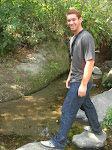The success of a micro loan hinges on the ability of the borrower to meet the monthly payment. One aspect of the loan application, then, is determining a borrower’s ability to repay the debt; for this, we use the Feasibility of Credit form. Put simply, the form helps to assess the borrower’s ability to pay by subtracting their monthly expenses from their monthly earnings. The Feasibility of Credit form will work to beneficially pair the borrower’s monthly repayment capacity with the terms of the loan.
Last weekend I had the opportunity to visit the Cooperative of Chaquija. A group of about 20 women in the Guatemalan village of Solola, Chaquija will be the first cooperative to receive a micro loan. The women of Chaquija often work through the day and night at antiquated loom stands to produce the fabrics that sustain their economy. Providing the cooperative with a loan will let them invest in higher quality tools and more advanced technology, in turn increasing their efficiency and improving their quality of life.
But the benefits of technological advancement stretch far beyond Chaquija’s looms. Access to information can in so many cases pave the way towards economic advancement. Yesterday, one of the boys in my host family, Victor, sprained his ankle during a soccer game at the local campo. I went to see how he was doing and was surprised to see that basic treatments – treatments we too often take for granted in our own homes – were being forgone. And I’m not talking about Advil and Ace bandages; I’m talking about ice. (Information isn’t all that limits Victors treatment; ice is hard to come by in a tropical climate and a home without a refrigerator or freezer.) I explained to him that it was important to keep his ankle elevated to limit the swelling, another step I had considered universally known.
I started to realize how much a simple internet connection could have provided real, physical – even medical – benefits to Victor and his family. Type "sprained ankle" into Google Search, and he could have learned in five minutes all he ever wanted to know about sprained ankles. (And in almost any language, no less.)
Technology that provides access to information can educate, strengthen, and connect communities across the world (both the “first” and “third” worlds). A family’s access to medical information, a farmer’s access to prices and markets, a mother who is able to contact her son in the United States about the status of next month’s remittance – these are just three of a limitless number of reasons that a connected world is a better one.
While I’m down here, I’m exploring ways to provide technology infrastructure to the three billion people that lack it. (And I look forward to the possibility of working with the Brute Labs team to provide this resource.) Dr. Muhammad Yunus echoes the same vision that there are too many middlemen between the developing and developed worlds.
In this last picture, taken from my office last week, you can see four Americans sitting inside using computers, and four artisans outside making jewelry. How much longer until no one needs to be on the outside looking in? As critically as we must pursue the many green efforts in place across the world, it’s time for us to enable an equally vast information revolution. It’s time to start "G-chatting" with the developing world.



No comments:
Post a Comment